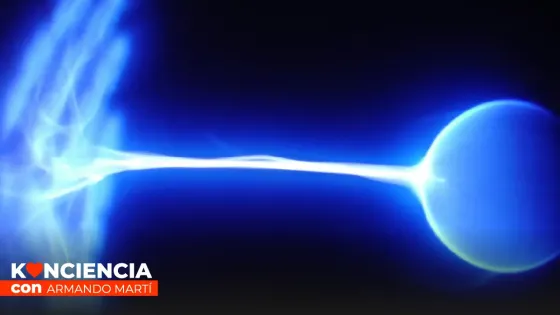The interaction between energy, matter and consciousness is the basis of human evolution. In 1905, the German physicist of Jewish origin, Albert Einstein, developed his famous equation: E=mc2, demonstrating that energy (E) is equal to mass (M) multiplied by the speed of light (C2). In other words, energy and mass are interchangeable as they are different forms of the same thing.
In this way, matter can be broken down into atoms and subatomic particles. According to the discoveries of quantum physics, it is observed that a photon or light particle moves simultaneously forward and backward on the timelines, that is, everything is energy.
Existence is energy, inanimate objects and animate beings are also energy. Therefore, the intelligence of the observer and the observed are thought energy, which influences our body, emotions and consciousness from different wavelengths and magnetic power. If this energetic trilogy (matter, energy and consciousness) work in harmony and coherence, comprehensive health would be present in our daily lives.
It is not by chance that in the last decade the term ‘electro-stress’ has been used as an explanation for the increase in medical, psychological and therapeutic consultations of people suffering from insomnia, fatigue, irritability, aggression, depression, anxiety. , emotional instability, phobias, panic, hyperactivity, generalized attention deficit, dizziness, vertigo, addictions, high blood pressure, low immune system, flu, allergies, thyroid problems and cancer, among others.
All these physical and psychological pathologies not only occur in the workplace, but also, unfortunately, in our own homes. We are surrounded by countless natural sources of radiation such as cosmic rays, radioactivity, the Earth’s magnetic flux and everyday events such as sunlight.
In this 21st century, man has created through artificial intelligence and nanotechnology countless electrical sources that affect us, from radio waves to the lighting of computer and cell phone screens, microwave ovens, tablets and cell phones, along with other electronic equipment.
There are two types of radiation to which we are exposed. On the one hand, ionizing radiation, which contains enough electromagnetic energy to alter chemical reactions, converting molecules partially or completely into ions, that is, it can increase or decrease the electron charge with respect to a neutral molecule. Generally, X-rays and Gamma Rays are the most common types of emission.
On the other hand, there is low-energy non-ionizing radiation, which is not capable of ionizing the matter with which it interacts and is classified into two groups: a). electromagnetic radiation (electric current lines or static electric fields, radio frequency waves used by radio stations, microwaves from household appliances and telecommunications) and b). optical radiation, which emanates infrared rays, visible light and ultra violet radiation.
Thus, three types of effects of non-ionizing radiation are known. The first is the thermal effect: when electromagnetic energy causes a prudent increase in the person’s temperature, the organs most affected being the vitreous humor of the eye, the lens, the liver, the pancreas, the lymph nodes, the stomach, the bladder and gallbladder.
The second, non-thermal effects, where the cumulative action of this type of non-ionizing radiation occurs mainly in people who have worked five years or more with radiolocation equipment, altering brain activity (attention, concentration and memorization).
The third, the athermal effects, which are inductions of electrical current that overstimulate nerve and muscle cells, producing electro-stress overloads, altering the physical, emotional and neuronal functions of exposed people.
